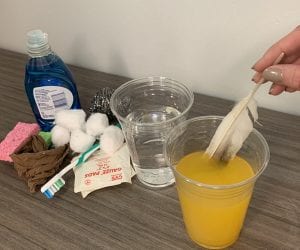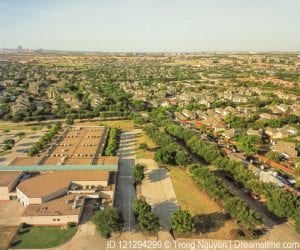We all know project-based learning has immense benefits for elementary students – it combines basic skills with higher order thinking strategies and allows students to problem solve, direct their own investigations, and take ownership of their learning. We also know that environmental problems will be some of the biggest issues faced by the next generation. So why not combine the two and improve learning outcomes while also protecting the planet?
The following ideas for eco-projects engage students in grades K-5 with pressing environmental issues while also linking to academic standards and reaping the benefits of project based learning.
Waste A-Weigh
Eco-project for 3rd, 4th and 5th grades
Each American generates about 4.5 pounds of trash every day and as our landfills fill up, it becomes more challenging to not only store our trash, but do it in a safe way. Start the project by having students weigh their lunchtime “waste” for one day (packaging plus food waste). Then lead an experimental project to determine the best ways to decrease waste. They can test out different strategies (for example, everyone brings utensils and a water bottle from home, food scraps are composted, etc.) to see what has the biggest impact on decreasing the weight of their daily waste. Students may then want to extend the project and work to apply the most effective strategies in the school or larger community. Check out the PopEd activity, Waste A-Weigh to get started.
Improvements for Pollinators
Eco-projects for grades K-5
After learning about the importance of pollinator health for wildlife and crops (bees pollinate about 15% of U.S. fruit, nut, and vegetable crops!), launch a project where students determine how to improve pollinator health around your school. You will want to start with an investigation and analysis of the school’s current pollinator-health status, followed by recommendations for improvement, and finally, implementation. To complete the project, create an authentic audience by having students teach the incoming class how to maintain their pollinator habitat during the following school-year. The National Wildlife Federation provides a great starting point for student research.
Cleaner Waters
Eco-project for grades K-2
In the PopEd activity, Who Polluted the River?, students participate in an interactive story to visualize the pollution of a local river over time. Extend the lesson into a larger project by having students design their own water filtration systems (check out this step-by-step STEM lesson from Teach Engineering) or by having students develop and implement ways to prevent pollution from entering a local waterway. One idea could be to stencil a storm drain, similar to the EPA’s clean water campaign, or to plan a community education and clean-up event.
Art as Inspiration
Eco-project for grades K-5
Communicating through art is not only fun and educational, but also effective. We all know how important green space is in a community. Students can feel empowered when they beautify a space to help ensure it’s used and enjoyed by all, as well as protected for years to come. Choose a green space in your community (or create one!). Then decide on an art project to beautify the space in a way that will illustrate its importance. Ideas could include a mural where each student paints how the space is important to them, or a mosaic project where students paint/sculpt a tile illustrating the benefits of green space and then the tiles are combined to form a walking path. To inform their project, students could conduct polls on current uses of community green spaces, analyze data on town demographics, study maps of the area, and/or learn about local wildlife.
Middle-school educators – stay tuned. We’ll be posting more eco-project ideas in the coming weeks!
Photo credits: Butterfly garden: Sleepy Hill Elementary School, Kids stenciling storm drain: City of Burnsville, Recycled brinks as school yard art: Pinterest




